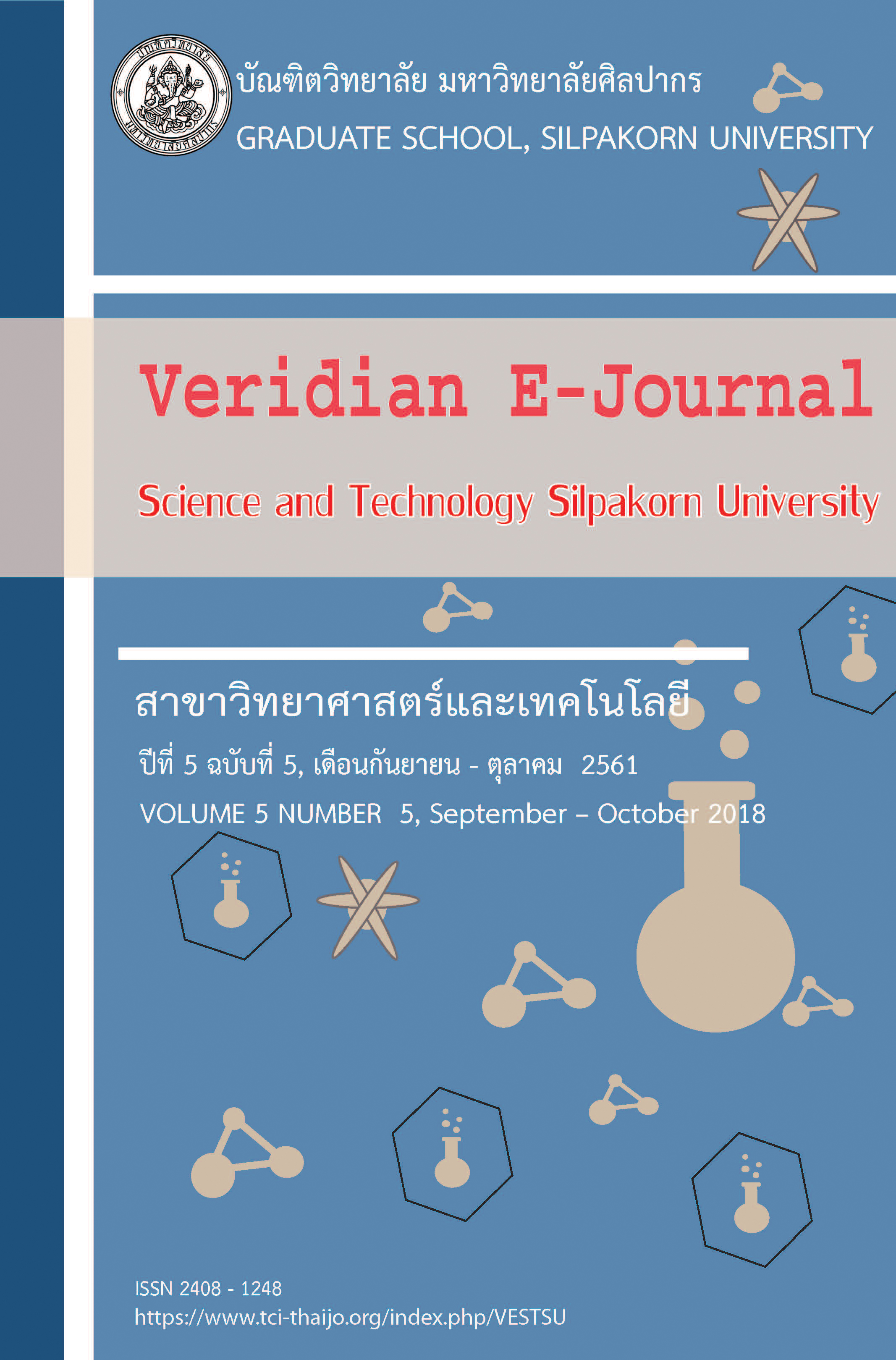การประเมินความเสี่ยงต่อสุขภาพจากการได้รับโลหะหนักในน้ำใต้ดินและน้ำประปาของประชาชนในบริเวณหลุมฝังกลบของเสียที่ไม่อันตราย อำเภอจอมบึง จังหวัดราชบุรี (Health Risk Assessment Of Heavy Metals In Ground Water And Tap Water Of The People In Non-Hazardous Waste Landfill Area, Chombueng District, Ratchaburi Province)
Main Article Content
Abstract
งานวิจัยนี้มีวัตถุประสงค์เพื่อศึกษาการปนเปื้อนโลหะหนักในน้ำใต้ดินและน้ำประปา รวมทั้งประเมินความเสี่ยงต่อสุขภาพของมนุษย์ทั้งความเสี่ยงในการเกิดมะเร็งและอันตรายอื่นนอกจากมะเร็งจากการได้รับโลหะหนักที่ปนเปื้อนในน้ำใต้ดินและในน้ำประปาบริเวณหลุมฝังกลบของเสียที่ไม่อันตรายอำเภอจอมบึง จังหวัดราชบุรี โดยเก็บตัวอย่างน้ำใต้ดินที่จุดอ้างอิงเหนือน้ำ จุดบ่อสังเกตการณ์น้ำใต้ดิน และจุดอ้างอิงท้ายน้ำ รวมทั้งเก็บตัวอย่างน้ำประปาเพื่อใช้เป็นข้อมูลประกอบการประเมินความเสี่ยงต่อสุขภาพ ระหว่างเดือน เมษายน – ตุลาคม พ.ศ. 2560
ผลการวิเคราะห์โลหะหนักในน้ำใต้ดินบริเวณจุดต้นน้ำและจุดท้ายน้ำพบ Ba Mn Ni และ Zn จุดบ่อสังเกตการณ์น้ำใต้ดินพบ As Ba Cr Hg Mn Ni Pb และ Zn ความเข้มข้นอยู่ในช่วง ND-0.004 0.011-1.37 ND-0.13 ND-0.006 0.013-11.14 ND-0.095 ND-0.042 และ ND-0.085 มก./ล. ตามลำดับ ซึ่งมีค่าอยู่ในเกณฑ์มาตรฐานทั้งหมด สำหรับในน้ำประปาตรวจพบเฉพาะ Mn และ Zn มีความเข้มข้นอยู่ในช่วง 0.011-0.038 และ ND-0.043 มก./ล. ตามลำดับ ซึ่งอยู่ในเกณฑ์มาตรฐานทั้งหมด
งานวิจัยนี้ไม่พบความเสี่ยงในการเกิดมะเร็งจากการได้รับโลหะหนักในน้ำใต้ดินและน้ำประปาบริเวณจุดต้นและจุดท้ายน้ำ เนื่องจากตรวจไม่พบ As ซึ่งเป็นโลหะหนักชนิดเดียวที่ก่อมะเร็งตามรายงานของ US-EPA (2011) และ US-EPA (2003) สำหรับการประเมินความเสี่ยงรวมในการเกิดอันตรายอื่นนอกจากมะเร็งสำหรับผู้ใหญ่พบความเสี่ยงจากการได้รับโลหะหนักเรียงจากมากไปน้อย ดังนี้ Ni Mn Ba และ Zn ซึ่งมีค่า Hazard index (HI) อยู่ในช่วง 0.050-0.069 0.011-0.062 0.006-0.045 และ 0.002-0.003 ตามลำดับ การได้รับสัมผัสผ่านทางเดินอาหารก่อให้เกิดความเสี่ยงมากกว่าทางผิวหนัง และความเสี่ยงจากการได้รับโลหะหนักจากน้ำใต้ดินสูงกว่าการได้รับโลหะหนักจากน้ำประปา โดยค่า HI รวมมีค่าน้อยกว่า 1 ซึ่งเป็นเกณฑ์ที่ยอมรับได้ของ US-EPA (1989)
The objectives of this research are to investigate the contamination of heavy metals in groundwater and tap water and to assess human cancer and non-cancer risk caused by heavy metals in groundwater in non-hazardous landfill area located in Chombueng district Rachaburi province. Groundwater and tap water samples, at up-gradient, landfill and down-gradient areas were collected during April to October 2017.
Ba Mn Ni and Zn were found in groundwater collected from up-gradient and down-gradient wells whereas the other heavy metals were not detected. The concentrations of As, Ba, Cr, Hg, Mn, Ni, Pb and Zn in groundwater collected from monitoring well located in the landfill area were ND-0.004, 0.011-1.37, ND-0.13, ND-0.006, 0.013-11.14, ND-0.095, ND-0.042 and ND-0.085 mg/L, respectively which was meet the requirements of Groundwater Quality Standards by the Department of Industrial Works (2016). For tap water samples, Mn and Zn concentrations were 0.011-0.038 and ND-0.043 mg/L, respectively which was meet the requirement of the Standard Deviation of Provincial Waterworks Authority, 2007. The other heavy metals in tap water were not detected.
No cancer risk caused by heavy metal intake due to the concentration of As in groundwater and tap water samples collected in the up-gradient and the down-gradient area was not detected. Only arsenic (As) causes carcinogenic risk in human, according to US-EPA (2011) and US-EPA (2003). Non-cancer risk, indicated by Hazard index (HI), caused by Ni, Mn, Ba and Zn descended from 0.050-0.069, 0.011-0.062, 0.006-0.045, and 0.002-0.003 respectively. The oral ingestion route caused higher risk than the dermal absorption whereas non-cancer risk from groundwater intake was much higher than that from tap water intake. The total HI was lower than 1 which was accepted by US-EPA 1989.

